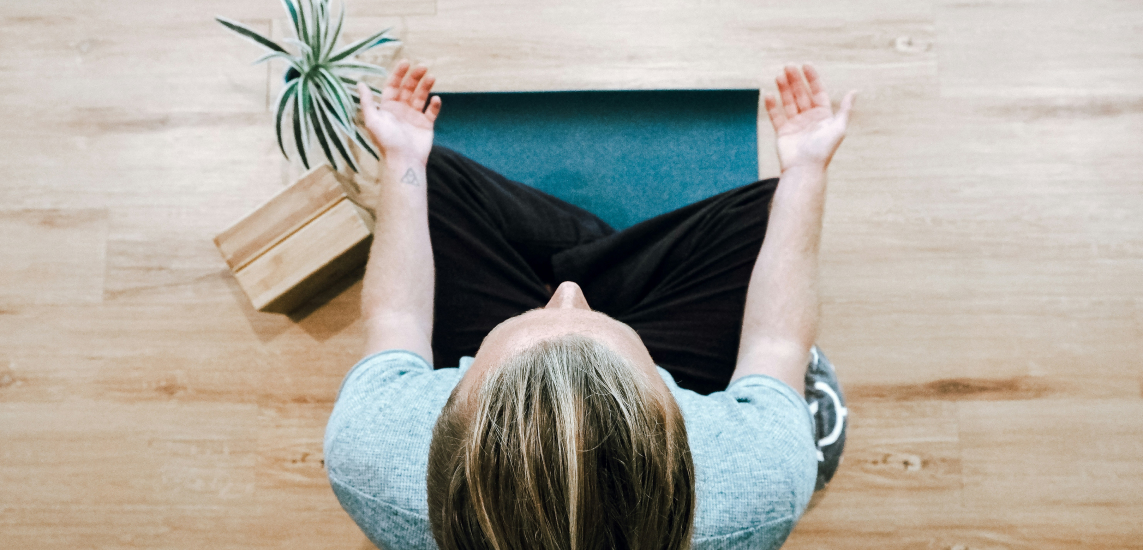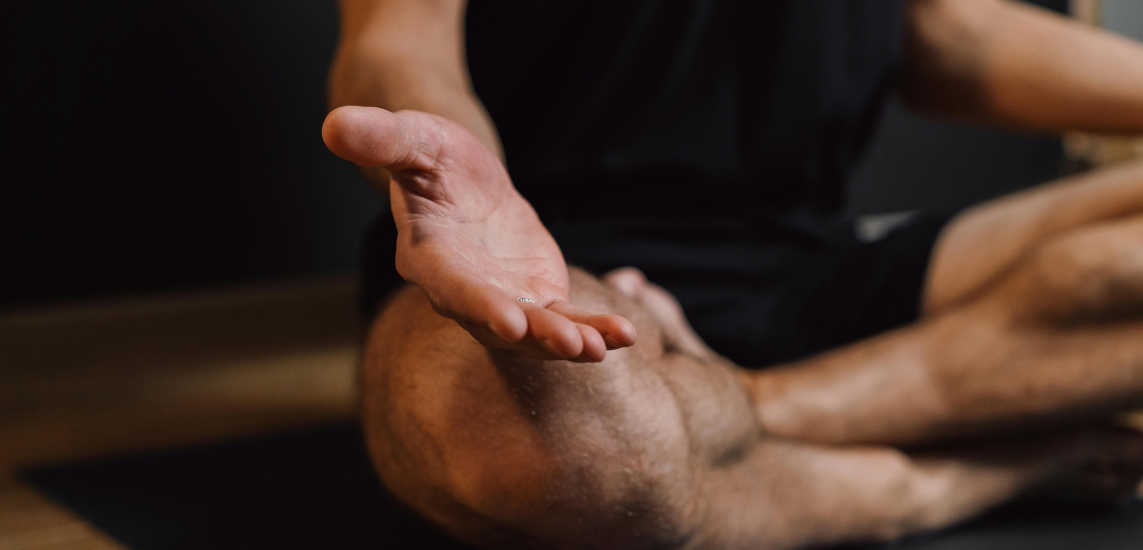Among the most common excuses for not meditating is lack of time. Ironically, the more we make the time for meditation, the more time we feel we have. We must begin, however, where we are. Practicing one-minute meditation is an accessible means for any level of practitioner to grow and expand their practice.
Why Meditate For Just One Minute?
Awareness is accessible to us in as little as one minute:
In just one minute, we can close our eyes, turn inward, and notice physical sensations in our bodies. In just one minute, we can deepen awareness of the movement in our minds. In just one minute, we can find greater clarity by noticing our feelings and emotions.
One minute of single-pointed focus is accessible for beginners and can also be used by seasoned practitioners as a way to combine formal with informal meditation and integrate the practice into the day.
Studies show that just by meditating at all, we’re more likely to increase the time we spend meditating. Even when beginning with just one minute at a time, by doing that meditation consistently, we develop mindfulness that stays with us beyond the sixty seconds.
One minute is achievable. In fact, there are multiple opportunities for us to insert 60 seconds of meditation into our day. When we first wake up, before we sit down to a meal, while taking a bathroom break, at our desk, on our commute, or in any moment of transition from one activity to the next, we can spare one minute.
Read more: Explore how to lower your stress levels by safely meditating during your long commute.
We can use our one-minute meditations any time a pause is necessary or welcomed. Sixty seconds of meditation is useful when we notice agitation, anger, frustration, or even boredom. It’s equally beneficial as a way to deepen awareness of positive feelings in moments of sheer joy, gratitude, and awe.
How & When To Practice One Minute Meditation?
It’s easiest to practice the following one-minute meditations when you already feel good. Although one minute of pause is extremely helpful in times of stress, you’re less likely to meditate when overwhelmed if you’ve never practiced meditation in times of ease.
By doing your one-minute meditations at the same time of day every day, you’re more likely to form a habit. Many people like to meditate first thing in the morning. You may soon find yourself working your way up to the morning, noon, and night, for a three-minute daily total. There’s no reason not to integrate one-minute meditations into your day multiple times.
Read more: Explore our guidelines to find the best time to meditate that works for you.
Over time, you may feel drawn to add length to your one-minute meditation. Go for two minutes, for three minutes, or more. By adding one minute every week, you’ll find yourself meditating for 52 minutes by the end of the year.
Can One-Minute Meditations Even Show Any Positive Effects?
The good news is, it may not matter whether your total daily meditation time increases due to frequency or duration. While the effects of meditation duration have only recently been investigated by scientific studies, early findings report that meditation’s outcome may be more dependent upon frequency than the length of any one sitting.
Both neuroscience and Buddhist teachings point to the benefits of consistent, repeated practice. However, time spent meditating in any one session does not significantly predict meditation’s effects. Whether your total accumulated meditation time is made up of one-minute intervals, or a single thirty-minute session, you may experience equally positive results.
With the knowledge that there’s no perfect meditation duration, why not begin with just one minute? Create a daily habit without needing to meet a self-imposed minimum. The following ten meditations can each be done in sixty seconds. Find one you enjoy, use it consistently, and find greater peace, clarity, and ease in your life.
Read more: “Have you tried meditation, hoping to experience some of the many proven health benefits, but gave up?” Giovanni Dienstmann explains how to meditate properly to feel the many benefits of meditation flourishing.
10 Ways To Meditate In Just 60 Seconds
We will explore ten ways of simply bringing 60 seconds of meditation into your day. At the end of this article, you will also find a playlist with guided one-minute meditations by popular Insight Timer teachers.
1. Grounding
Whether seated or standing, close your eyes to turn inward. Notice all the points of your body that are making contact with your chair, your seat, or the ground. With every exhale breath, soften further into those points. With every inhale breath, feel the returning energy of earth rising up to meet you through those points of contact.
Discover thousands of free guided meditations for staying grounded.
2. Embodying
Place one palm on your heart and the other on your belly. Using the felt sense of touch, breathe in and notice the rise of your chest and the expansion of your belly into your palms. As you breathe out, feel the weight of the palms on your body. Repeat.
3. Centering
With your right palm face-up on your left, touch together the tips of your thumbs. Draw your awareness to the space below your navel. Imagine a warm, comforting sensation. Slowly bring this sensation up the length of your spine, through your torso, heart, throat, and out through the crown of your head.
4. Exhale
Breathe gently in and out through your nose. Count the length of your inhale breath, then spend one count longer on your exhale. Keep the count of the inhales the same as you gradually increase the count of the breath out. Work your way up to an exhale breath that’s 1.5 times the length of breath in and repeat this breath. Breathe gently the whole time, without forcing.
5. Breath
Breath easily in and out through your nose. Count your exhale breath as number one. Count the following inhale as number one. Count the next exhale as number two. Followed by inhale number two. Exhale three. Inhale three. Continue. With patience, stay equally aware of the breath and the count. If attention wanders, begin again with exhale breath number one.
6. Gratitude
Beginning with the basic element of form, evoke gratitude for your human body, your beating heart, and your breath. Stay there, or expand the sensation of gratitude to the safe space around you (natural beauty or the roof over your head), the things around you, (your clothing or luxuries) and the people around you (those whom you love, or even those who present a challenge).
Read more: Writing a gratitude journal is a popular informal meditative practice. Learn how to expand the writing from the blank page to living a life of gratitude. Also, browse through hundreds of free guided gratitude meditation practices that create a readiness to show appreciation.
7. Compassion
Sit for one full minute offering silent words of loving-kindness towards yourself. ‘May you be happy, may you be well, may you feel joy.’ Next time, extend one full minute of the same silent offerings to your closest loved ones, then to those whom you hardly know, then to those who present you with challenges. Close the minute by imagining the joy felt by the subject of your kindness.
Discover our large free collection of loving-kindness meditation that help developing impartial and unconditional love.
8. Awareness
Soften the space behind your eyes and between your ears. Notice spaciousness. Without attaching to any one thought, sensation, or feeling, notice what arises. Make an equal commitment not to push anything away, not to resist, nor fight against any noticed sensation, thought or emotion. Remain as a neutral witness, resting in open awareness.
9. Mindfulness
As you breathe with eyes closed, direct your attention to the one area of the body where you notice your breath the most. Still evoking spaciousness in the mind, gradually zero in on the details of that one sensation. Slowly progress toward a smaller, singular point of concentration. Understand there is no endpoint to this exercise.
10. Movement
Even while seated in relative stillness, notice how your breath moves your body. Notice the movement of the breath itself. Notice the movement within the activity of your mind. Notice the movement as if from a distance, without attaching to any one thought. Via awareness of body, breath and mind, notice how each is imbued with movement and change.
Guided One-Minute Meditations
If you need some more guidance to apply these ideas to your daily routine, you might enjoy listening to these handpicked guided practices. Visit the Insight Timer profiles of Robin Rice and just-a-minute to discover even more one-minute meditations:
- Take A Break - One Minute Breathing Space Vidyamala Burch 1:38
- Letting Go just-a-minute 1:14
- One Minute Meditation Franko Heke 1:13
- 1-Minute Meditation: You Are Enough Robin Rice 0:57
- One Minute Stress Relief Jasmin Terrany, LMHC 1:30
- One Minute Meditation Bodhipaksa 1:02
- 1 Minute Relaxation - Mentalfloss Richard Scott 0:58
- One Minute At Mid-Day Jenne Marley 1:15
- One Minute to Inner Calm Peggy Sealfon 1:02
- One Good Minute Lisa Hubler 1:05
- One Minute Meditation Don Reed Simmons 0:59
- A Clear Mind just-a-minute 1:15
While meditation always requires some amount of discipline, it’s possible to find joy in the effort. Take note over time as your one-minute meditation practice evolves and evokes even greater joy.






-1.jpg)

